The Oroville Dam spillway was wrecked months ago. Here’s where the repairs stand as rain season looms
- Share via
New images released by state water officials Thursday highlight the immensity of repairs made to the
More than an inch of rain is expected in the area between Thursday and Sunday, according to the National Weather Service.
In a series of photographs released by the California Department of Water Resources, workers contracted by the state are shown drilling, blasting, and smoothing out portions of the damaged spillway and the earthen pool below it.
The construction giant Kiewit Corp. is fully rebuilding an 870-foot section of the middle spillway and a 350-foot section at the bottom with high-strength concrete. It is using a fast-setting pavement, known as roller compacted concrete, along an additional 1,050-foot section in the middle that will be upgraded next year. The upper 730 feet also will be repaired next year.
The lower half of the spillway structure crumbled amid powerful storms in February, disabling the reservoir’s most important tool for controlling its water level, which endangered hundreds of thousands of residents downriver.
The state has been working at a frantic pace since the rains subsided in spring to patch up the spillway for the fall and winter, hitting a key deadline Nov. 1.
Below are some images of the work in Oroville from this week and in the months since the spillway first crumbled.
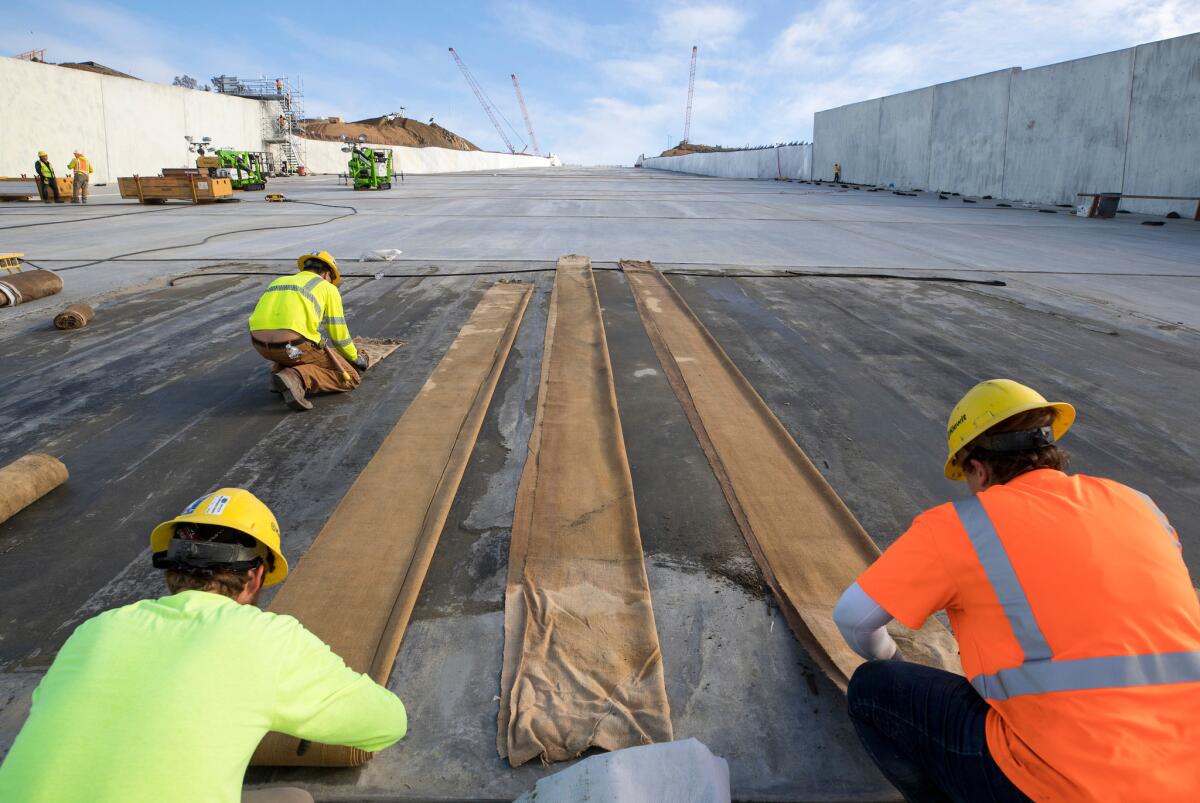
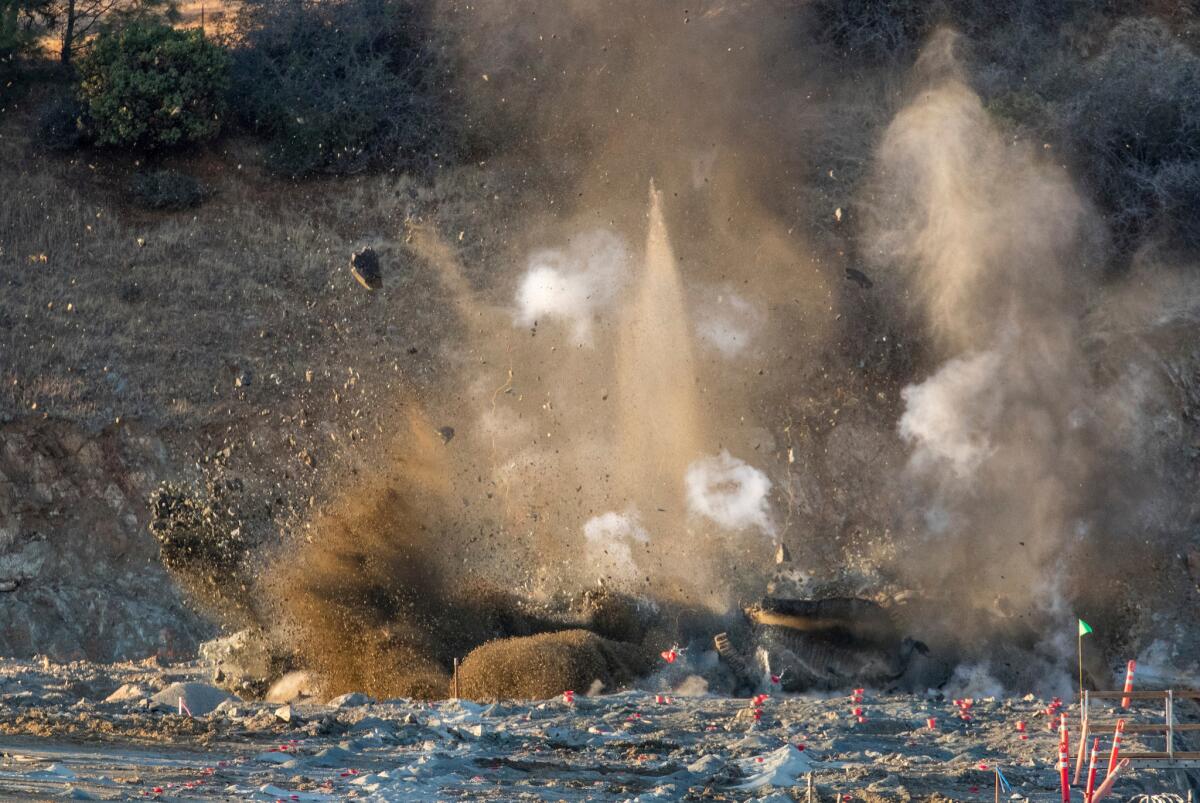
About 700 construction workers, backed by teams of DWR engineers, worked in 22-hour shifts building forms, laying steel reinforcement rods and pouring concrete in the damaged middle and lower sections of the chute.
When completed, the 3,000-foot-long spillway will have concrete slabs thicker than a runway, reinforcement rods and thousands of anchors epoxied at least 15 feet deep into rock — making it significantly stronger than the original 1960s design.
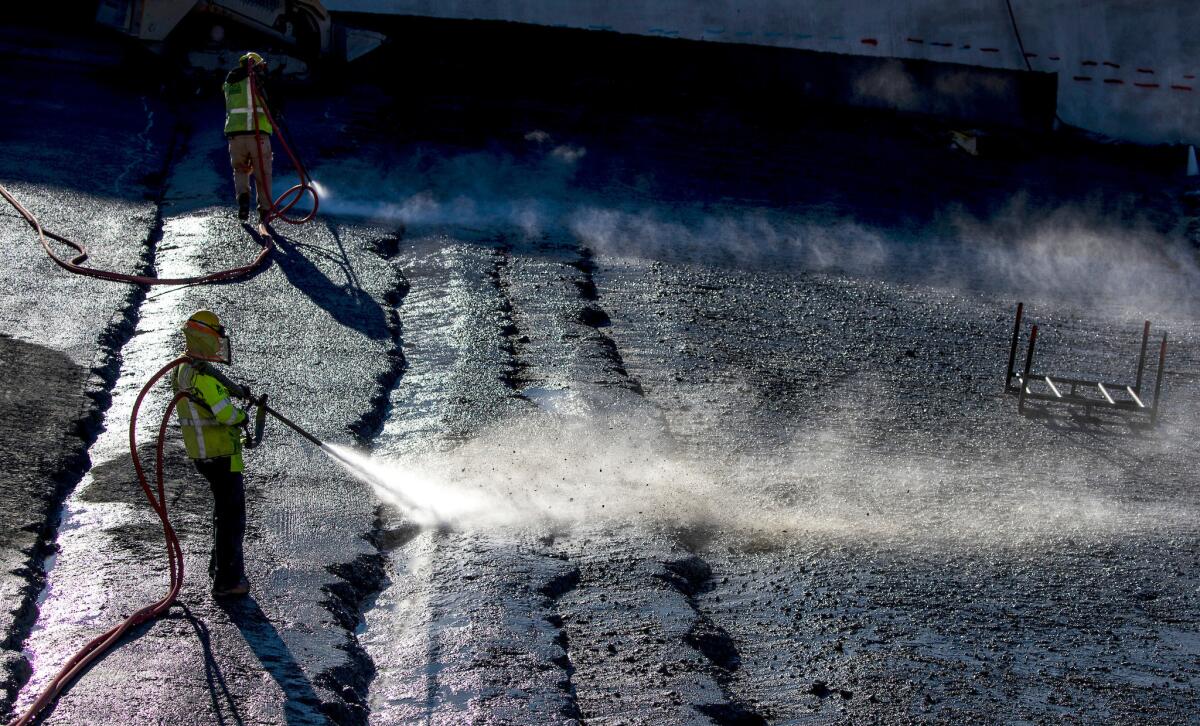
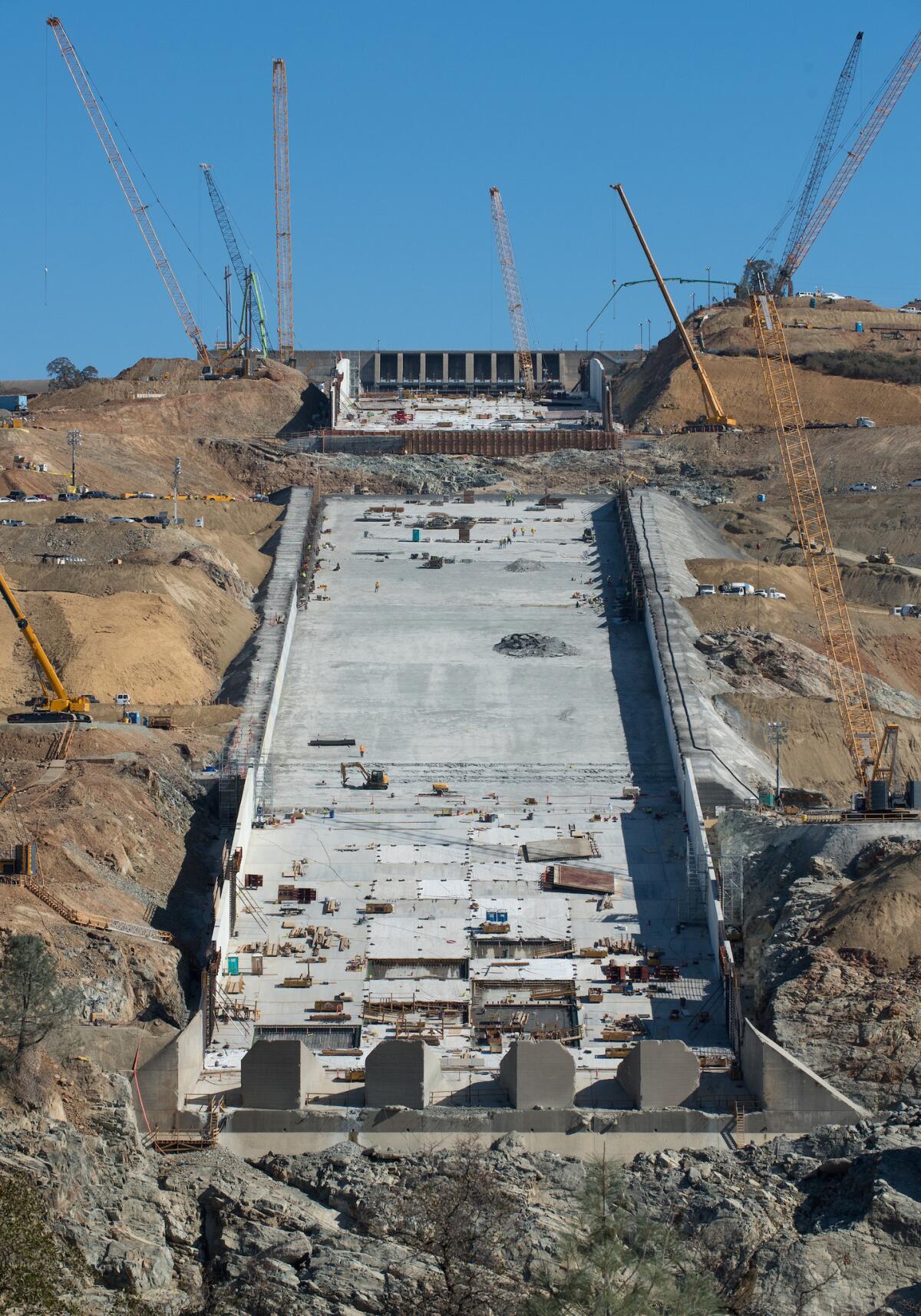
The new concrete slabs on the spillway floor are at least 5 feet thick, compared with a minimum of 18 inches in the old chute, officials said. In some sections, workers are filling voids tens of feet deep with concrete. Crews are cleaning up hillside bedrock with picks and vacuums to ensure a good bond.
By the time repairs are fully completed next year, the entire spillway will be new except for the gate control structure. The original estimate came in at $275 million, but it now looks like the tab will hit $500 million.
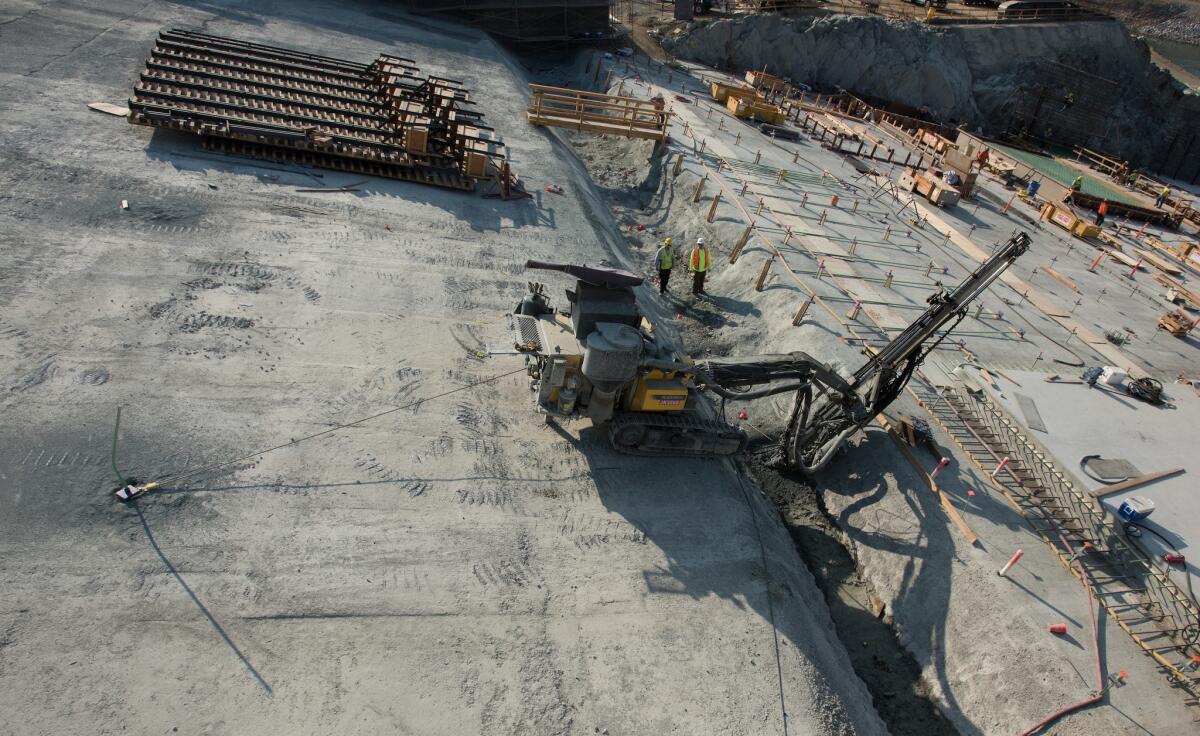


The damage before repairs
It took months of cleanup work to prepare the facility for its fixes.
A power plant was taken offline, and the level of the Feather River was lowered for weeks at a time.
Below are images of what the spillway looked like before the repairs.
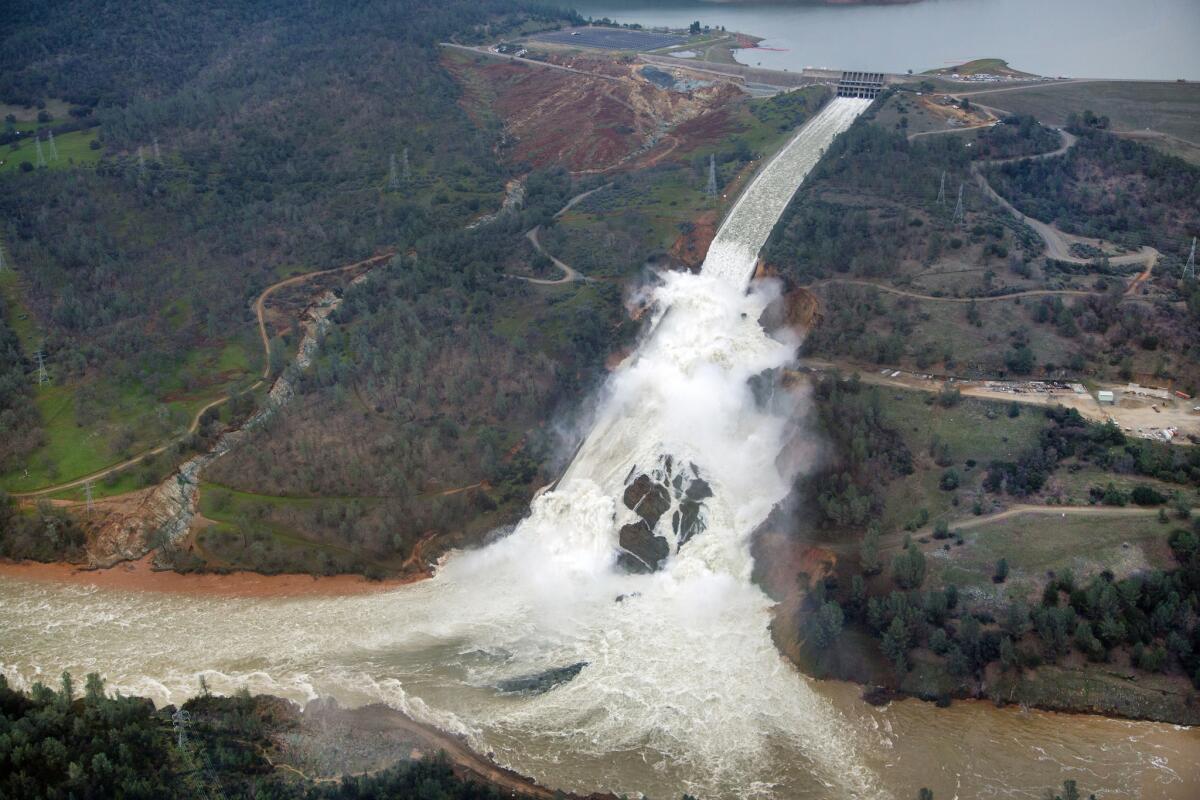
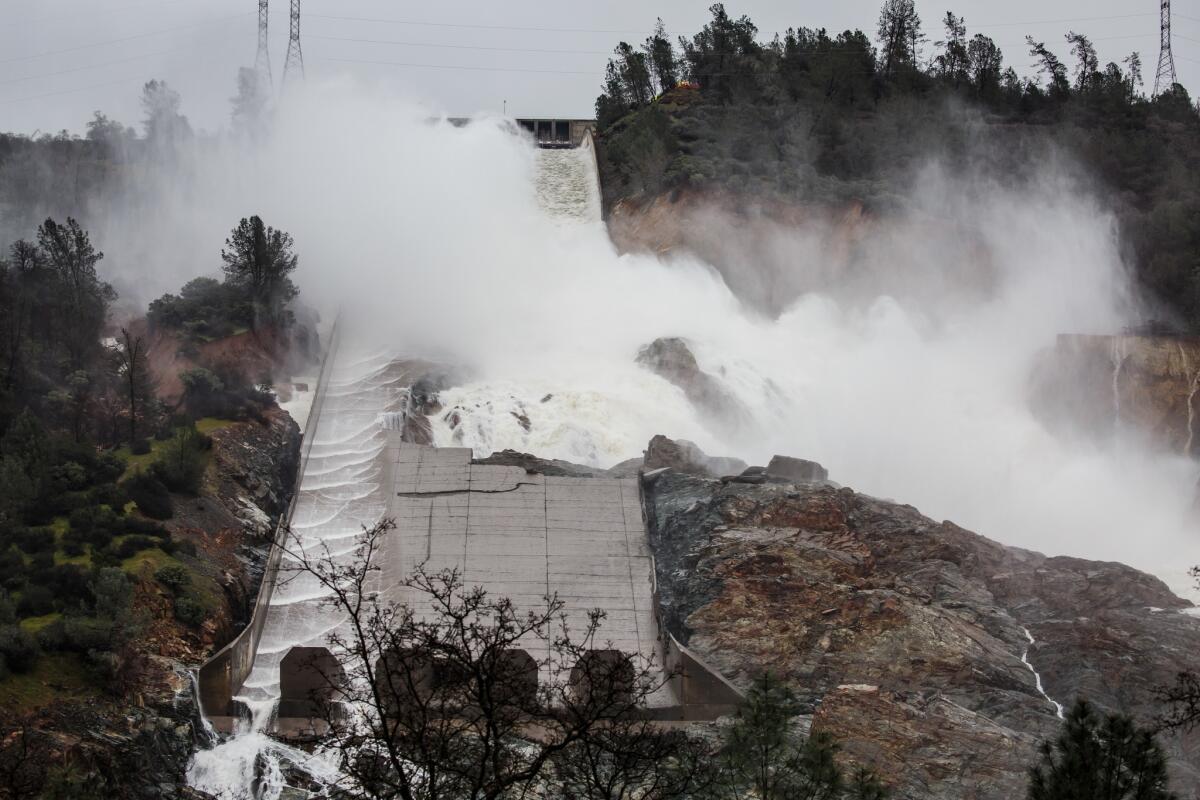
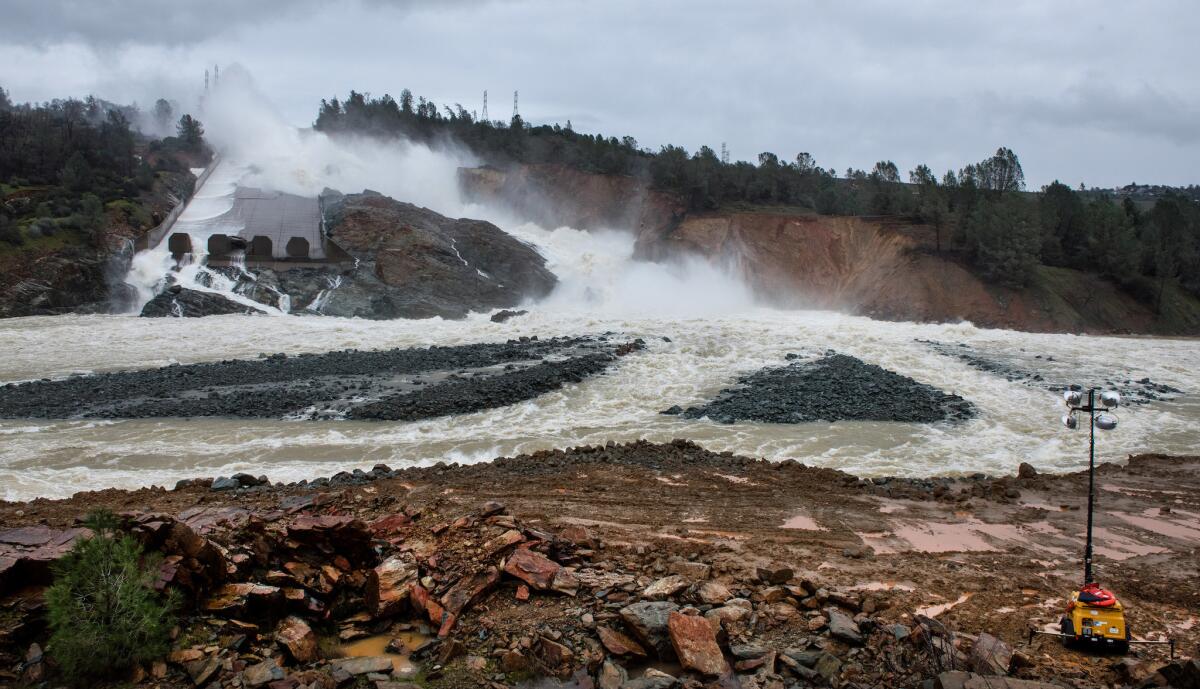
Staff writer Ralph Vartabedian contributed to this report.
